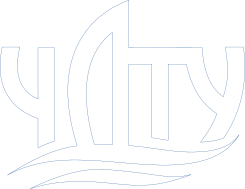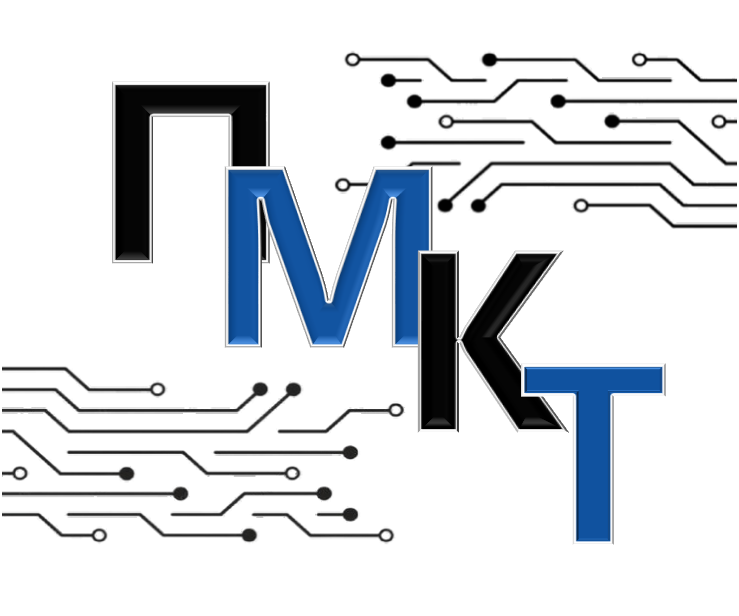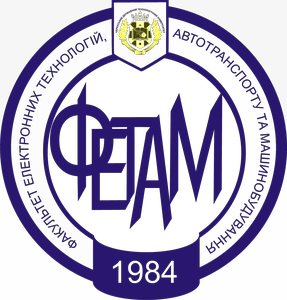International Conference on Sensors, Devices and Systems (SDaS-2025),
dedicated to the memory of Prof. Valery Sharapov
September 18 – 19, 2025
Cherkasy, Ukraine
The goal of the conference is to bring together scientists in the fields of precision instrumentation, micro- and nanoelectronics, nanoengineering, specialists in the design, construction and metrological support of sensors, devices and systems, as well as computer engineering specialists and experts in conducting expert research in various fields, specialists in energy audit, energy efficiency and energy security to exchange ideas, discuss trends and prospects for the development of science, core and related industries, and establish contacts.
The format of the conference will be hybrid, allowing participants to present their materials in person, remotely, or through video presentations, exhibition installations, and posters. Participants who are unable to attend in person are encouraged to submit a video presentation. Following the conference, electronic certificates of participation will be provided for each participant. The conference proceedings will be considered for publication in Springer’s Lecture Notes in Electrical Engineering, which is a Scopus-indexed series.
Paper Submission Deadline August 01, 2025
Recommendation Notification August 11, 2025
Acceptance Notification August 18, 2025
Camera-ready Version September 01, 2025
Registration September 14, 2025
Conference Dates September 18 – 19, 2025
Chairs
- Constantine Bazilo, DSc., Professor, Cherkasy State Technological University, Cherkasy, Ukraine
- Maksym Bondarenko, DSc., Professor, Cherkasy State Technological University, Cherkasy, Ukraine
- Emil Faure, DSc., Professor, Cherkasy State Technological University, Cherkasy, Ukraine
- Victor Antonyuk, DSc., Professor, National Technical University of Ukraine “Igor Sikorsky Kyiv Polytechnic Institute”, Kyiv, Ukraine
- Andrzej Dzierwa, DSc., Associate Professor, Rzeszow University of Technology, Rzeszow, Poland
- Liudmyla Usyk, PhD, Associate Professor, Cherkasy State Technological University, Cherkasy, Ukraine
Local Organizing Committee Members
- Anna Toptun, PhD, Cherkasy State Technological University, Cherkasy, Ukraine
Authors are invited to submit original unpublished manuscripts that demonstrate recent advances in the following areas of interest, but are not limited to:
Important Dates
August 01, 2025
Paper submission
August 11, 2025
Recommendation notification
August 18, 2025
Acceptance notification
September 01, 2025
Camera-ready version
September 14, 2025
Registration
September 18 – 19, 2025
Conference dates
Authors can submit original and unpublished research papers. All papers presented at SDaS´2025 must be associated with one of the conference topics. The papers will be published without charging publication fees, provided that at least one of the co-authors (preferably a leading scholar and expert in the field, whose name is indicated in the registration form) reviews two articles submitted to the conference by other authors (to be proposed by the Organising Committee). Otherwise, the conference fee is 2,000 UAH per paper (50 USD for authors from outside Ukraine). Each paper will be peer-reviewed and evaluated for originality, technical and/or research content/depth, correctness, originality, completeness, contribution and readability. Information relevant to the conditions and the peer review procedure, will follow in the next information notice. Accepted papers should be presented at the conference by one of their authors, who undertakes to register and make a presentation at the conference. In case an author fails to submit an accepted paper at the appointed time and date stipulated in the conference programme, the Committee reserves the right to exclude the paper from the proceedings.
The working language of the conference (including conference proceedings, presentations and discussions) is English. Submission of a manuscript implies that the paper presented has not been published before; that it is not under consideration for publication elsewhere; that its publication has been approved by all co-authors, if any, as well as by the responsible authorities – tacitly or explicitly – at the institute where the research has been carried out.
Authors should be prepared to send relevant documentation or data upon request in order to verify the validity of the results presented. The supporting data can take the form of raw data, samples, records, etc. Sensitive information in the form of confidential or proprietary data is excluded.
Authors wishing to include figures, tables, or text passages that have already been published elsewhere are required to obtain permission from the copyright owner(s) for both the print and online format and to produce evidence that such permission has been granted when submitting their papers. Any material received without such evidence will be assumed to originate from the authors.
Please download and MAKE SURE TO FOLLOW these essential guidelines when preparing your paper:
- All papers must comply with the Springer guidelines (paper template). Papers with another formatting will be rejected without review. The submission should correspond to the Conference Topics. Otherwise, it will be declined from further consideration without review.
- Every paper will be checked upon submission with Springer’s built-in system for detecting plagiarism and large language models (LLMs) powered by AI. The originality of the paper must score no less than 85%; however, the aim of the study, its scientific novelty, as well as the core ideas and conclusions must demonstrate 100% originality. Authors whose papers do not pass the originality check on the first attempt will be advised to revise and resubmit their revised papers.
- All papers will be proofread to comply with the requirements of Academic English.
- Article length shall be 8–10 full pages, including all figures, tables, and references. The papers less than 8 pages and more than 10 pages will be rejected without peer-review.
- The title, abstract, authors, and affiliations, as well as the order of authors in the submission system, should be identical to that stated in the paper itself.
- Only one email address (corresponding author) is to be indicated in the paper. All communication will be with the corresponding author only. The corresponding author should specify their corporate e-mail.
- Please be noted that the number of co-authors is limited to five persons. One person can submit no more than two papers and only one paper as the first author.
- It is preferable to use ORCID for all co-authors.
- Use Title Case for the paper title, i.e., capitalizing all main words. Do not include academic titles or descriptions of academic positions in the paper.
- The abstract should summarize the content (goal, scientific novelty, practical value, used methods, main results, etc.) of the paper in short form, i.e., 150-250 words. The abstract should objectively represent the article: it must not contain results that are not presented and substantiated in the main text and should not exaggerate the main conclusions.
- Key words or key phrases consisting of 5 to 8 words/phrases cannot duplicate the words and(or) phrases from the paper’s title.
- The papers should follow the general structure: 1 Introduction, 2 Literature Review, 3 Research Methodology, 4 Results and Discussion, 5 Conclusions, 6 Acknowledgment (if necessary).
- Use high-quality figures in your paper (resolution at least 300 dpi).
- Supply all figures as separate graphics files (in addition to being embedded in the text).
- Name your figure files with “Fig” and the figure number, e.g., Fig1.jpg.
- Abbreviations should be defined at first mention and used consistently thereafter.
- Reference citations in the text should be identified by numbers in square brackets.
- The Editorial Board highly encourages you to cite up-to-date literature (2020-2025 preferable), and sources indexed by databases Scopus and Web of Science (peer-reviewed journals with high impact factors are preferable). The recommended References List should contain 15-25 literature resources. Self-citations (i.e., references to publications authored or co-authored by any of the authors of the submitted article) must not exceed 15% of the total number of sources cited.
- Authors must strictly adhere to the article formatting requirements and submission rules. Otherwise, the article cannot be accepted (as per Springer’s publication guidelines).
- Authors should also note that since the conference is international, there should be at least one expert from abroad among the authors of each paper (excluding individuals from aggressor states, such as russia, belarus and countries with which diplomatic relations have been severed by Ukraine and the EU).
Corresponding Authors should register their participation in the Google Form and submit their papers online using the EquinOCS Conference Management System (the link will be followed in the next information notice). Authors should follow EquinOCS User Guide submitting their papers.
The manuscripts should be submitted in PDF format (file extension *.pdf). The deadline for paper submission is August 01, 2025.
Each speaker is allocated 15 minutes. It is recommended to use up to 10 minutes for the presentation itself and 5 minutes for Q/A session.
The recommended file type for presentations is PowerPoint (*.pptx) for slide presentations and MP4 (*.mp4) for videos.
The presentation files should be sent to the Organizing Committee no later than September 14, 2025.
All presenters will be introduced to the audience by the Session Chair.
The template of the presentation can be downloaded via the Link. We highly recommend preparing a presentation according to the mentioned below structure. Please keep to the format and do not exceed the maximum number of slides:
- Title Slide [1 slide];
- 1 Introduction and Major Challenges [1 slide];
- 2 Aim and Research Tasks [1 slide];
- 3 Research Methodology [up to 5-10 slides];
- 4 Results [up to 5-10 slides];
- 5 Conclusions [1 slide];
- Acknowledgment [1 slide] (optionally);
- Thank You Slide [1 slide].
Remember that you can expand your presentation by giving comments, while only essential and graphical information should be presented on slides. The recommended number of slides in the presentation is 15-20.
The following points should be taken into consideration when preparing your oral presentation:
Make sure that you are available at least 10 minutes before the session starts on the conference day.
The session PC will be equipped with a Windows OS and MS PowerPoint software. Remember to embed all your fonts into your presentation. If you show video or animated media, make sure it runs on Windows Media Player.
When preparing your slides, make sure that they will be legible for the entire audience (i.e., use fonts of sufficient size). JPEG/TIFF images are the preferred file format for inserted images. Images inserted into PowerPoint are embedded in the presentations. Try to avoid overloading the presentation with additional images.
460 Shevchenko Blvd., Cherkasy, 18006, Ukraine
Cherkasy State Technological University,
Department of Instrumentation, Mechatronics and Computerised Technologies
Organising Committee of the ISTC “Sensors, Devices and Systems – 2025”
Contact phone: +38 (063) 377 9073 (Viber)
E-mail: [email protected]




